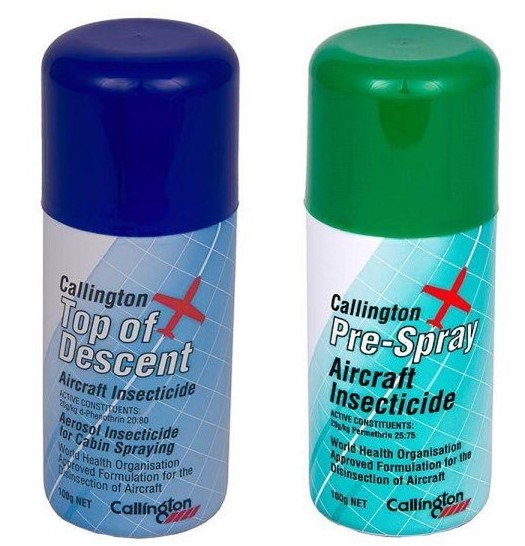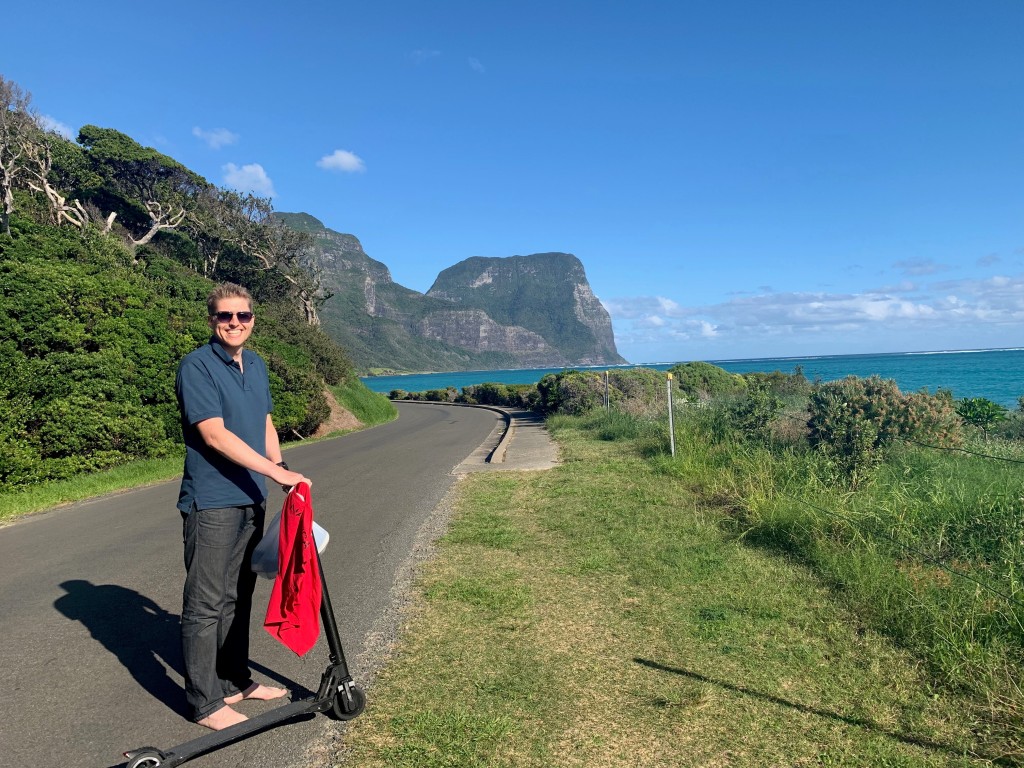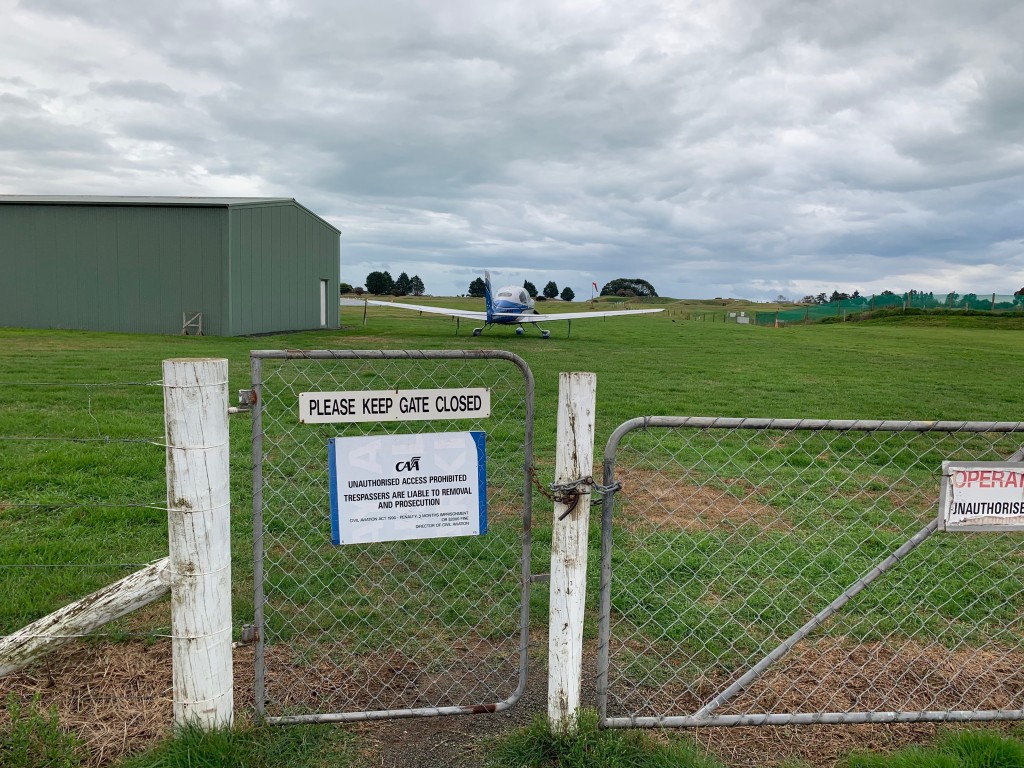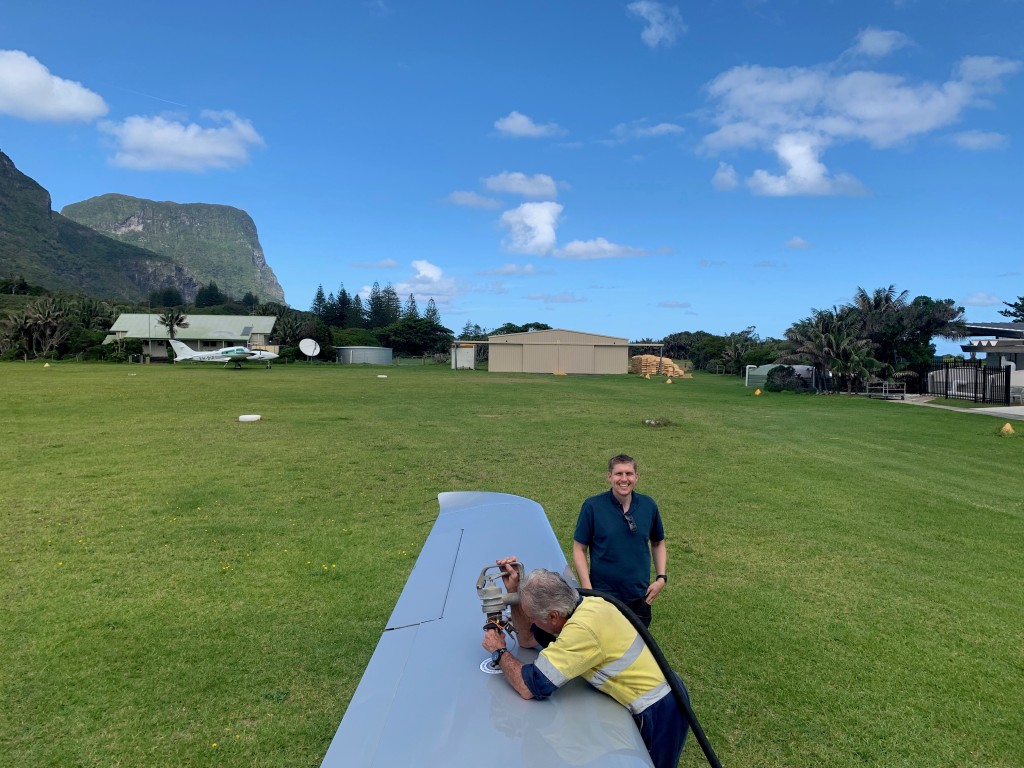We spent an unreasonable amount of time just trying to figure out how to fly a private aircraft to New Zealand and back. Here is everything we discovered through the process… and everything we wish we knew! Below we cover all the immigration and customs paperwork, safety gear, itinerary and information on some of the operational planning and ground logistics.
Step 1: Make a friend
Our trip wouldn’t have been possible without making some friends. I reached out to Shelley Ross, who is our all time inspiration. She connected me to the kindest of gentlemen, Peter Murwood. Peter flies out of Paraparaumu at the bottom of the North Island. I can safely say that we would not have had such an amazing time without his guidance – he provided us plenty of recommendations and warnings! I shared with him our planned itinerary, and he gave us plenty to think about. It was also nice to know we had a friend in case anything went wrong.
Step 2: Figure out customs & paper work
Now this will erode all your patience! I swear, when you fly commercial overseas, you have no idea about all the paperwork required. None of the answers were clear or easy to find! I’m sure this will all change in time, but on our journey, we needed the following forms, and details on the processes are outlined below:
- Landing permit for Lord Howe. Needs to be done for both outbound and inbound – here
- Australian Border Force – You’ll need to fill out the forms 2a (Passenger report face sheet), 2b (passenger report details) and 3 (inwards/outwards crew report). All forms to be done both ways. Can be found here
- NZ customs – entry and exit forms. You need to fill out the 1. passenger cards for arrival, 2. Form c1a – inward report aircraft, and the 3. NZCS 361: Application for aircraft arrival/departure – NOTE this application should be done well in advance. Upon departure you need to submit Form C2A (however, this seemed redundant as we had made the arrangements via Form 361)
- Disinsection certificates – Appendix A (pg 22) and Appendix C (pg 24). Note that you’ll need to do appendix A 8 weeks prior and Appendix C for every day you cross borders. It has to be done on the day so print multiple copies. NZ MPI and Australian Quarantine will need these certificates to clear your arrival into country.
Quarantine requirements were relatively simple – and, amazingly, the same for both Australia and New Zealand. Guides can be found here. In addition to not importing/exporting any nuts/fruit/live animals etc, the key requirement is that you need to pre-treat your plane with specific insecticide prior to travel (and have a certificate of currency) and provide evidence of use of using Top of Decent spay at TOD entering NZ and returning to Australia. Technically Lord How Island is not a port of entry for Quarantine purposes (only immigration/Border Force!!) so technically it is not clear if we are meant to use it as we transited through, but we did (both ways) to be on the safe side. NOTE – you must have your certificates printed and completed and dated. These are found in the appendix of the Schedule of aircraft disinsection procedures for flights into Australia and New Zealand. NOTE – the residual treatment must be done within 8 weeks, and TOD spray at TOD of the relevant flight.
We searched high and low and couldn’t work out where to buy the spray – there are two types – “Pre-Spray: Pre-embarkation aircraft insecticide” and “Top of Descent: Aircraft insecticide for use in aircraft cabins”. We didn’t know where to buy them from so we reached out to a local FBO who was kind enough to sell us two cans of each. However, you may be able to buy from Callington directly.

Leaving Australia/Entering New Zealand:
We flew Bankstown > Port Macquarie > Lord Howe Island > Kerikeri. We technically left Australian customs and immigration on Lord Howe Island. It is important to note that while LHI is a port of entry, it is only for customs and immigration (Department of Home Affairs), not quarantine (which is handled by Department of Agriculture)… this is not important for exit, but it is for re-entry.
There is a lovely lady who contracts for the Department of Home Affairs/ Border Force who will make sure all your paperwork is in order. It was hard to track her down as there is no mobile reception… but eventually we left our email address with the number on the landing permission form (02 6563 2066) and she got back to us with arrangements via email. On departure you need 2 types of Passenger reports and one crew report (links below)
We also had to submit a landing permit for LHI and pre-pay the landing fee (its a tonnage rate which came to $27 for us). Links to relevant forms outlined below.
Upon arrival at LHI we refueled and made arrangements about departure times, refueled, before heading into town for a bite to eat. There was some construction at the airport and one of the guys happily lent us his ute to pop into town. Even though we made all the arrangements prior, remember everyone operates on island time.
Because of our range we could track direct from Lord Howe to Kerikeri, but I understand that others may have to fly via Norfolk island. Apologies that this blog doesn’t provide information about Norfolk!
Arranging to arrive in New Zealand was a lot easier to get help to figure out – we simply emailed the NZ costumes service for clarification. While it is listed as an approved airport, it isn’t staffed so advance approval is required and you have to complete “NZCS 361: Application for aircraft arrival/departure”. There was a bit of back and forth via email about arrival and departure times – our original request was rejected and we had to bring our arrival forward to allow inspections in daylight. Customs were absolutely lovely to deal with, very helpful and provided us the contact details of the staff who would receive us. The guys were there ready and waiting and i think more excited to meet us than interested in the paperwork!
Leaving New Zealand/Re-entering Australia
Departing New Zealand was simple – the only thing to note is that we were stung with a NZ$250 out of hours fee for the customs officers to be on site for the 6am start on our return journey. Not too unreasonable given it was a Sunday call out – they could have easily just rejected the request.
Our departure arrangement had already been cleared as part of our entry request at a non-standard airport, however you are technically meant to submit Form C2A at least 24 hrs prior to departure – we forgot but it didn’t seem like an issue given the departure time was prearranged.
Returning to Lord Howe Island had also been pre-arranged with the Australian Border Force, however:
REMEMBER: LORD HOWE ISLAND IS ONLY APPROVED PORT OF ENTRY FOR CUSTOMS NOT QUARANTINE. THE RESULT = DRAMA.
What does this mean and why? Well, customs and immigration are the remit of the Department of Home Affairs. They have a contractor on staff to process incoming and outgoing passengers. However, she is not authorized to undertake quarantine inspections by the Department of Agriculture, who is responsible for Australia’s quarantine laws. What does this mean? It means that from a quarantine perspective, you don’t technically re-enter Australia at Lord Howe, but must enter at another Airport.
This for us was the most confusing and biggest drama of the whole trip. In terms of fuel range, we did not have any airports that have GA options, so had to request special inspection. Initially we found a form on the website. This was sent to the required email address. After weeks of non-reply I chased down the regional quarantine team, who instructed me to fill out another form. I spoke to them about our route and resquest, and they assured me it would all be fine. This also, evidently, was incorrect advice.
The form we were instructed to fill out was this one here. We filled out the form and sent it to the email that was advised. Again, weeks of non reply and me following up. We still had not had confirmation when we were in NZ and a few days away from returning home. So I resorted to phone calls.
The long and the short of it was that at 4.45pm on the Friday before we were due to return home on the Sunday, we were advised that our request would be denied due to staffing issues. After sitting on our request for several weeks, we had 15 minutes before close of business to deal with the fallout of not having any viable return options.
We were giving a series of bad advice, including…
First piece of bad advice: “You can land at Newcastle airport.”
Anyone who has ever tried to get GA permission to land at Newcastle airport knows how silly this advice was. Even more so with less than 24 hours notice. We tried, but obviously failed.
So I return the call to the department with this news. Their response… “you can try your luck at Sydney International.”
HAHA. Asking us to try for a peak hour slot on the last Sunday of the Easter School Holidays…. We’d need to work a miracle. Well, work a miracle we did. Not sure how, but my husband’s smooth talking got us a 6pm slot.
Back to the department.. I reached back out to find out who to contact upon arrival in Sydney international and received…
Second piece of bad advice: “Don’t worry, the local team is automatically advised of your arrival when you submit your flight plan, and they will be there ready and waiting, the tower will provide you instructions on arrival”
WRONG
Approaching Sydney International, the tower asks us where we are going and who is receiving us. Our reply was feeding back the guidance received from the department…. silence…. um… ‘we’ll need to look into that one’….
Having no idea of what to do with us, me just make our way to GA with all the private jets. People seem super nervous. Turns out that we have magically timed our arrival with the Prime Minister’s departure on his personal RAAF jet. I’m sure our strange and unannounced arrival put the Australian Federal Police and the PM’s security detail into a right old spin, so they held us in no-mans land until the PM and his entourage boarded and cleared out of the GA area.
With GA relatively to ourselves, we waited… and waited… and waited… Apparently the local quarantine team are not automatically notified upon arrival. There is a process that needs to be followed, however this is usually done by the designated FBO. We had not engaged a FBO based on the advice received by the department which implied that there wouldn’t be any ground handling requirements…. and were were keen to avoid the bill which was expected to be over $1,000 for the privilege.
Almost two ours after our arrival, stuck sitting in Billie, quarantine inspectors finally arrived. They dutifully asked us if we had used Top-of-Decent Spray, ticked a few boxes on their form, then sent us on our way. A three hour detour for a 3 minute process that did not have anyone to psychically inspect our plane. Amazing.
(What was also amazing was that we managed to avoid any ground handling or parking fees!)
Despite the inconvenience and wasted fuel and time, watching Rupert’s face as he got to taxi his little single engine aircraft around Sydney International amongst all the big jets was a smile worth seeing.
So, what is the right way to do it? Who knows!! Arriving at Newcastle isn’t really an an option according to the people we spoke to. Sydney International would be hard to plan for without incurring thousands of $$ in ground handling fees. Bankstown is unreliable as its not staffed, and a little single engine does not get prioritised in an era of under-staffed and under-resourced departments…. The reality is that the only way to reliably plan for would be to plan to fly into Brisbane from LHI, and suck up to the additional fuel and time costs.
Please let me know if you find another way so I can update this page!
Step 3: Buy all the safety gear
Rupert spent a long time planning and researching safety. In the end we took with us the following:
- PLB.
- Ditch bag with all the standard survival gear, first aid, plus extra water and dehydrated meals. Enough food and water for 5 days.
- 4 x life jackets.
- 1 x 4-6 man life raft which is approx $5,000 new – we bought second hand. This traveled between us in top of the middle console.
- 1 x Switlik single person life raft. Such an amazing buy. Rupert saw it at the Avalon airshow, but the Australian retailer was legitimately more than double the online cost so we bought online from Aviation survival. I actually did the crossings with this one clipped to my belt.
As part of Rupert’s research he estimated that in the event of a ditch, worst case we would be at sea for 3 days. We also decided to be extra cautious and carry and extra life raft for the event of one being damaged in the ditch.
What we didn’t have was a sat phone. Wish we did. As we didn’t have HF radio capability, we relied on relaying our ops normal reports back to tower via other commercial flights. While a sat phone isn’t authorized ATC seems to expect it.
While not safety gear, we also brought with us two electric scooters. These are super handy for when the airfield is between 1-5km out of town. They have a decent charge, can travel up to 20km an hour, and weight about 12kg. They were very useful for exploring LHI!

Step 4: Figure out your route, plan your landings and ground logistics.
So, for all your landing, airstrip information, this is the new bible. http://www.aip.net.nz/Home.aspx. It was super important for understanding the NZ ways, plates etc.
Our original itinerary is detailed (very detailed) below:

However, due to our tire blow out, our plans were completely disrupted. We had an extended period of time in Hastings (I did partially make up for it in wine tasting) which meant that we missed out on Rotoroua, reterning to Waiheke for our once splurge night, an overnight in the Coromandals, and our time in Kerikeri.
Also, as there had been a bit of rain, and we did not have access to current information on the unregistered Awaroa airstrip in the Abel Tasman National Park, we ended up hiring a car from Nelson, driving to Kaiteriteri Beach, then catching a ferry to Awaroa. Upon arrival and inspection of the strip, we were pretty confident of landing, however we were not to know. Despite the effort to get there, staying with Mike and Birgit at Awaroa Glamping was a real treat and well worth the journey – plane or no plane!
Another variation was that we landed at Blenhiem rather than Omaka, as Omaka had restrictions in place due to the airshow, and it had been raining on the grass strip. It was only 8km away so a good choice.
In terms of accommodation, it was a mix of airbnb and booking.com. In planning our destinations, I did lean towards accommodation on or near the airstrip – Awaroa Glamping in the Abel Tasman, Waiheke Villas and Pauanui Pines motor lodge were all on or next to or overlooking the airstrip.
For those destinations that were a bit further afield, we relied on taxis or the hospitality of Locals – In several places we just hitched a lift. There wasn’t a single destination where we were stuck, lost or wanting for assistance.
As part of the planning we couldn’t find anything about air side access, so was slightly nervous about not having the NZ equivalent of an ASIC card… however airside was not a problem anywhere we went – most airfields didn’t have security, even once with commercial and passenger operations like Nelson. I was slightly nervous about Blenheim as it is an airforce base as well as a commercial airport, but while slightly more secure, we had no problems. The AIP should have any info.

Step 5: Figure out where/how to buy fuel
While I over planned the ground logistics, and could have planned less, do not be cavalier about purchasing fuel. We inaccurately assumed that the fuel system would be relatively similar in New Zealand, and that paying by credit card would largely be an option, however we were wrong. It was unclear in the research, but to be safe, we arranged for a fuel card with Z Energy. This was a bit challenging to arrange and we had to link to a friends account and address in New Zealand to do so. I would recommend doing so a fair way in advance.
Once we were in NZ we figured it out – The reason fuel is hard to buy is apparently there is a culture of using avgas for high performance rally cars, and people will sneak into airfields to fuel up. To prevent this, many airfields don’t have unmanned bowsers that accept credit cards.
But Z energy wasn’t available at all fields. In some places we could buy with a credit card and pay the operator (as long as it was a weekday and within office hours), and others we had to find someone willing to pay for us and give them cash. Between the Z card and our ingenuity we did ok, but if you’re planning a trip don’t assume it is easy to get, and you may find yourself unable to refuel on weekends and delayed a day.
Also, just don’t look at the fuel bill in LHI. I mean, it is an island in the middle of the ocean, but paying over $6/L was eye watering.

Step 6: Acceptance
You know they say that life is what happens when making plans… well, the best laid plans is a concept that dominated the trip. What made it wonderful was taking all the twists and turns as part of the whole adventure. Weather, tyres, landing strips, bureaucracy. All of it wanted to get in the way. But while it didn’t go to plan, we had a marvelous time, and there was a camaraderie to our trip that made our marriage and sense of adventure stronger than ever.
So, what would we do differently?
Not much to tell you the truth. We can’t change the weather, the unknown was part of the adventure, and while we certainly did not want the drama of quarantine, landing at Sydney International was amazingly cool, and the drama was part of the story. That said, if we had a magic wand…
- Flying a Cirrus? Pack a spare tyre. Those babies are hard to come by. While you’re at it, just pack any essential spare parts.
- Organise a fuel card well in advance. We Only had it for half the trip.
- Take a Satellite phone for the crossing. Even though it is technically not permitted to be used, Brisbane Traffic would have greatly preferred we had it, rather than having to relay our ops normal via nearby commercial planes.
- Have more time! It was just too short and there were so many places we missed.
That’s it. Everything else was just part of the adventure.
If you have any questions, or are thinking of doing the adventure yourself, don’t hesitate to reach out.